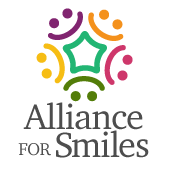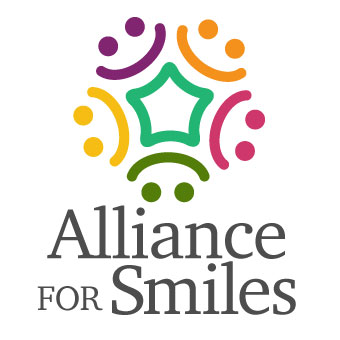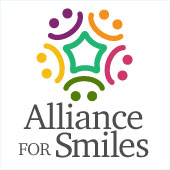Ethiopia – culture, economy, and physical environment
In May 2023, Alliance for Smiles will be visiting Ethiopia for the first time. Our group of volunteers and staff will be undertaking a surgical and training-focused mission in the beautiful city of Hawassa, located in central Ethiopia, where we will be situated at the Hawassa University Hospital and College of Medicine and Health Sciences. We are very excited to venture into a new corner of the world, and in the meantime, we’d like to invite you to explore this scenic country with us.
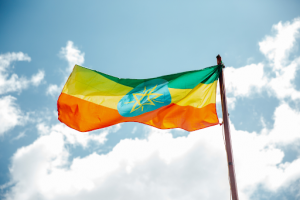 Located in the northeastern portion of Africa, Ethiopia is the continent’s second largest country, its population recently surpassing 120 million citizens (World Bank). Of this population, the majority of Ethiopians currently fall within younger age groups—about half of the population is 15 years old or younger (Embassy of Ethiopia).
Located in the northeastern portion of Africa, Ethiopia is the continent’s second largest country, its population recently surpassing 120 million citizens (World Bank). Of this population, the majority of Ethiopians currently fall within younger age groups—about half of the population is 15 years old or younger (Embassy of Ethiopia).
Ethiopia’s capital, Addis Ababa, is located in the central region and translates to “New Flower” (Britannica). The demographic array found in the capital highly reflects the country’s overall multicultural setting. Ethiopia is an epicenter of African and Middle Eastern cultures, the latter primarily due to Ethiopia’s close proximity to Saudi Arabia and Jordan.

This allows for many Middle Eastern communities to easily migrate into the African country. Additionally, it establishes Ethiopia as a notable trade center amongst the Middle East, Europe, and Asia. Ethiopia is known for its energy resources, agricultural products, construction sector, and more (Embassy of Ethiopia).
Due to Ethiopia’s diverse population, nearly 100 languages are spoken throughout the country. Amharic and Oromo are the main working languages, spoken by 29% and 33% of the national population, respectively. These two languages are closely followed by Somali, Afar, and Tigrigna (Translators Without Borders).
Given the variety of cultures, Ethiopia is made up of various spread-out rural communities, and a collection of larger, urban cities. This includes Addis Ababa and Hawassa in central Ethiopia, Gondar and Mek’ele in the northern region, and Dire Dawa in the east.
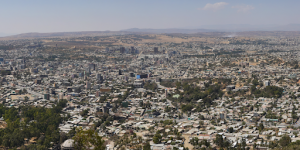
At higher elevations—such as in the West Highlands—Ethiopia experiences more rainfall, which contributes to the tropical savannas found in those areas. In comparison, the rest of the country rests at lower elevation and receives less rainfall, creating desert environments.
Throughout the year, Ethiopia progresses through rainy and dry seasons of altering longevity. The coldest temperatures occur during the dry spells. As a result, many areas—primarily, lower elevation, rural regions—are made up of dry shrublands (Britannica).

Ethiopia – the healthcare system
Ethiopia’s largest hospitals with full operating clinical staff are found in a handful of localized cities, such as Addis Ababa (Britannica). This is mainly due to the primary medical schools, such as the University of Gondar, being located in these cities. Oftentimes, certified physicians go directly to these nearby hospitals, rather than returning to rural areas, which often hold smaller facilities and fewer health supplies.
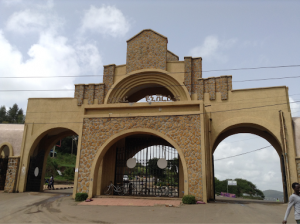
Outside of the largest hospitals, 82% of Ethiopia’s healthcare facilities are health posts. (Hospital Topics). Health posts are often staffed by a few health workers, such as midwives, traditional healers, and/or health surveillance assistants (UNICEF). Health centers and smaller hospitals can be found in rural areas as well; these places serve residents with general health issues but lack specialized care, such as surgeries (Hospital Topics).
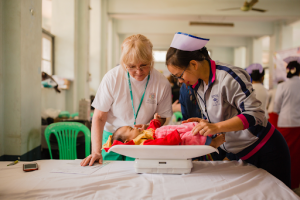
The main challenge found in the Ethiopian healthcare system is the lack of healthcare workers, especially in relation to the growing population. Currently, there are only 1.26 healthcare staff per 1,000 Ethiopians (Hospital Topics). With the help of charitable organizations, such as Alliance for Smiles, we can help to fill in the gaps found in rural communities’ health services.
Case studies on cleft lips and palates
In Ethiopia, the primary health concerns consist of communicable diseases, such as HIV/AIDS (Hospital Topics). Cleft lips and palates are also among these concerns, especially in rural areas, where surgical interventions are not often possible.
The mouth and lips form during the first trimester of fetal development. Cleft lips and palates are a result of incomplete formation of the mouth, lips, or both (CDC).
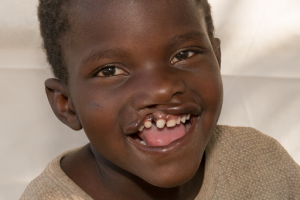 Ethiopia experiences one case of cleft lip and/or palate per 672 live births. Of the impacted population, more than 70% of Ethiopians with the birth anomaly are not able to receive surgical intervention (University of Toronto).
Ethiopia experiences one case of cleft lip and/or palate per 672 live births. Of the impacted population, more than 70% of Ethiopians with the birth anomaly are not able to receive surgical intervention (University of Toronto).
A study was conducted in northern Ethiopia, comparing the rates of cleft lips and palates in the city of Mek’ele to the capital, Addis Ababa. Almost 40,000 neonatal health charts—collected between 2011 to 2016—were examined.
Researchers found that out of this population pool, there were 3.11 cases of cleft lip and/or palate per 1,000 live births. Almost half of these cases were a cleft lip and palate combination. Additionally, about 10% of cases had another physical impairment, such as a heart defect or limb anomaly.
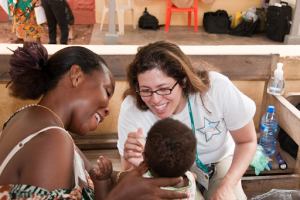 In comparison, data collected from hospitals in Addis Ababa only had 1.49 cases per 1,000 live births. A number of potential factors contributed to northern Ethiopia experiencing a higher prevalence, with a major cause being environmental factors.
In comparison, data collected from hospitals in Addis Ababa only had 1.49 cases per 1,000 live births. A number of potential factors contributed to northern Ethiopia experiencing a higher prevalence, with a major cause being environmental factors.
In general, Ethiopian women were found to lack crucial vitamins in their diet. This can be attributed to the nationwide food insecurity, as well as the nutritional composition of the food present, as a result of the country’s climate and flora.
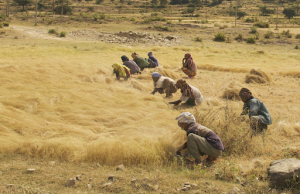 Amongst pregnant Ethiopian women, few consumed an adequate amount of folic acid. Folic acid is a type of B vitamin, often found in leafy green vegetables, and helps to form new healthy cells. In regions with low elevation, desert environments—such as the north—agriculture does not yield many of these folate-dense vegetables, but instead cereal crops, such as wheat and millet (PREP Data).
Amongst pregnant Ethiopian women, few consumed an adequate amount of folic acid. Folic acid is a type of B vitamin, often found in leafy green vegetables, and helps to form new healthy cells. In regions with low elevation, desert environments—such as the north—agriculture does not yield many of these folate-dense vegetables, but instead cereal crops, such as wheat and millet (PREP Data).
Additionally, many Ethiopians in the north frequently drink “Wushwush” green tea. While this drink holds many health benefits, the tea contains a high content of catechins. Catechins inhibit the absorption of folic acid, as well as folate, another B vitamin that creates new DNA (Pharmacognosy Research).
Maternal diet and physical weight are both factors strongly associated with a woman’s child forming a cleft lip and/or palate. It is recommended for children to receive cleft repair surgery between the ages of one year to two (CDC). Not only does surgical intervention improve the ability to eat, drink, and speak, but it can improve a person’s quality of life.
Another study conducted in Ethiopia interviewed almost 400 patients who received surgery at least six months prior. All patients received the cleft lip or palate repair from a charitable organization at no cost. The interviews intended to capture the mental and physical effects the patients experienced after receiving cleft repair surgery, especially in the remote areas where they lived, as their local health facilities did not offer the surgical procedures.
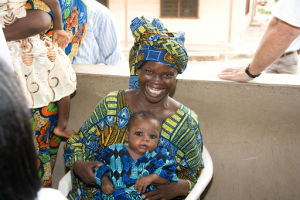 Interviews were done before and after each patient’s surgical intervention. In general, before surgery, Ethiopians reported a low quality of life and experiences of social isolation from their community. After surgery, participants reported an overall higher quality of life. Amongst adolescent patients, there was about a 30% increase in their academic and social engagement. Alongside this, a handful of adult patients felt socially included and had gotten married after their surgery (Journal of Plastic).
Interviews were done before and after each patient’s surgical intervention. In general, before surgery, Ethiopians reported a low quality of life and experiences of social isolation from their community. After surgery, participants reported an overall higher quality of life. Amongst adolescent patients, there was about a 30% increase in their academic and social engagement. Alongside this, a handful of adult patients felt socially included and had gotten married after their surgery (Journal of Plastic).
What can you do?
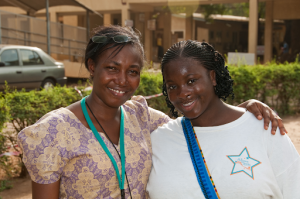 At Alliance for Smiles, we send medical teams to various hospitals and clinics throughout Central and South America, Asia, and Africa to offer free cleft surgeries to underserved communities. Currently, our team is preparing to travel to Ethiopia, Vietnam, Ecuador, and Honduras. Donate here to help fund surgeries in these upcoming locations and the training and equipment needed to help local medical teams serve children with cleft conditions on their own.
At Alliance for Smiles, we send medical teams to various hospitals and clinics throughout Central and South America, Asia, and Africa to offer free cleft surgeries to underserved communities. Currently, our team is preparing to travel to Ethiopia, Vietnam, Ecuador, and Honduras. Donate here to help fund surgeries in these upcoming locations and the training and equipment needed to help local medical teams serve children with cleft conditions on their own.
